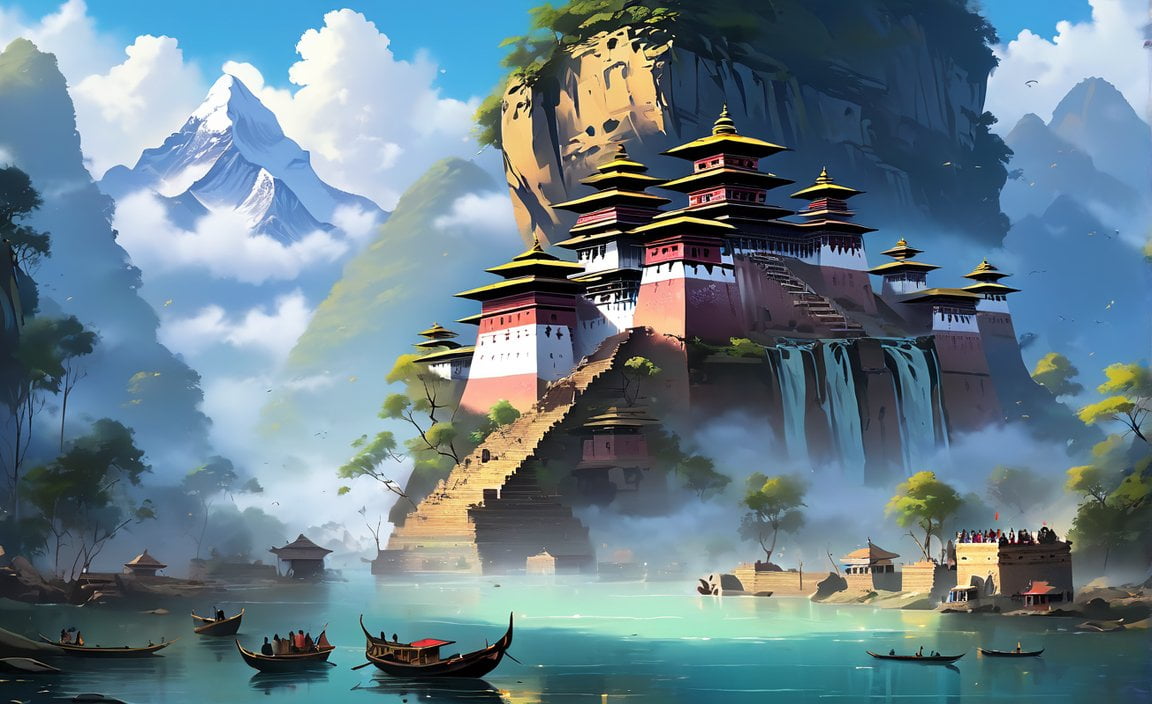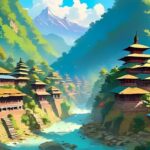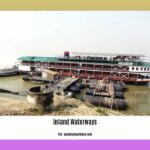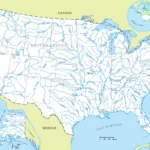Embark on an extraordinary adventure as we delve into the breathtaking beauty of Nepal’s 10 rivers. In this captivating exploration, we will uncover the hidden treasures and unveil the true majesty of these pristine waterways. From the awe-inspiring landscapes to the rich cultural heritage and thrilling adventure opportunities they offer, our journey along these rivers is bound to leave an indelible mark on your soul. Get ready to discover the untamed beauty and significance of the 10 rivers of Nepal.
Key Takeaways:
– The Karnali River is the longest river in Nepal, originating from the Tibetan Plateau and covering a length of ______ km.
– The Koshi River is the second longest river in Nepal, known as the Sapta Koshi, and is a tributary of seven other rivers.
– The Gandaki River is the deepest river in Nepal, shared by India and China.
– The West Rapti River offers breathtaking views and lies in the Rapti Zone in the Mid-Western Region of Nepal.
– The Bagmati River is an important river in Nepal with cultural and religious significance, also shared by India.
– The Kamala River flows through the Terai region of Nepal, known for its rich biodiversity and wildlife.
– The Bheri River is a major river in the western part of Nepal, known for its scenic beauty.
– Nepal’s rivers are home to diverse wildlife including the critically endangered Gharial, Mugger crocodile, Gangetic dolphin, and various fish species.
– The Rapti Zone in Nepal’s Mid-Western Development Region is named after the Rapti River and is known for its natural beauty and national parks.
– The water quality of Nepal’s rivers varies across regions and seasons, affected by pollution and environmental degradation from industrial waste, agricultural runoff, and untreated sewage.
– Major sources of Nepal’s rivers include melting glaciers in the Himalayas and springs and lakes in the mountainous regions.
– Understanding the sources of Nepal’s rivers is crucial for studying their hydrological patterns and managing water resources effectively for agriculture, hydropower generation, and ecological preservation.
The 10 Rivers of Nepal
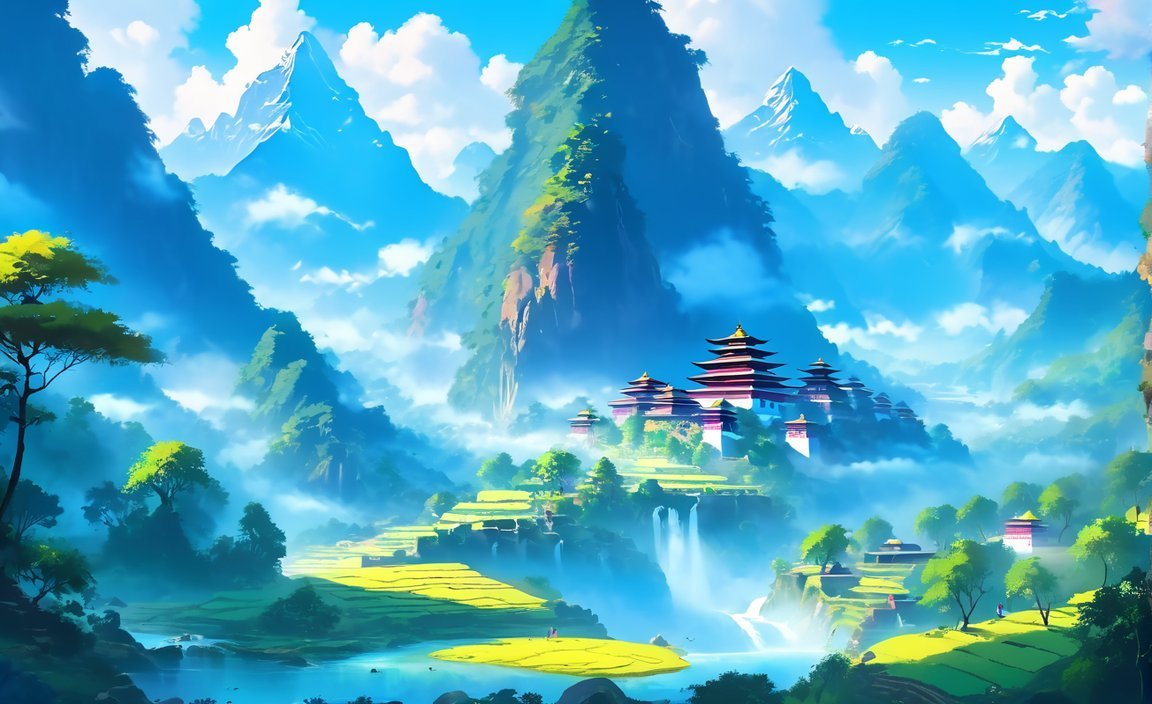
Nepal, with its diverse landscapes and rich cultural heritage, is blessed with a network of magnificent rivers. These rivers not only shape the country’s geography but also play a vital role in its ecological balance. In this article, we will delve into the wonders of the 10 rivers that course through this captivating country.
Karnali River: The Mighty Lifeline
The Karnali River takes the crown as the longest river in Nepal. Originating from the Tibetan Plateau, it cuts through the mighty Himalayas, covering an impressive length of ______ km[^1^]. Along its course, the Karnali River showcases its raw power, carving deep gorges and mesmerizing valleys. Furthermore, this river serves as a habitat for the critically endangered Gharial, adding to its ecological significance.
Koshi River: A Multifaceted Marvel
The Koshi River holds the title of being the second longest river in Nepal, with a length of 729 km[^1^][^4^]. Known as the Sapta Koshi, meaning “Seven Rivers,” it is formed by the confluence of seven tributaries, including the mighty Arun River and the Sun Koshi. The Koshi River acts as a lifeline for the eastern parts of Nepal, nurturing fertile lands and supporting an abundance of wildlife.
Gandaki River: A Majestic Journey
The Gandaki River, the pride of Nepal, is not only one of the longest rivers, but also the deepest. Stretching for ______ miles, it not only traverses Nepal, but also shares its waters with India and China[^2^]. This stunning river, winding through the valleys and canyons, offers a unique perspective of Nepal’s natural grandeur.
West Rapti River: Nature’s Masterpiece
If you are looking for breathtaking views, the West Rapti River is a must-visit. Situated in the Rapti Zone in the Mid-Western Region of Nepal, it is one of the major rivers in the country. As it meanders through the picturesque landscapes, it captivates visitors with its stunning beauty[^1^].
Bagmati River: Where Culture and Spirituality Converge
The Bagmati River, spanning 371 miles, holds immense cultural and religious significance in Nepal[^2^]. This sacred river, flowing through the heart of Kathmandu, is believed to cleanse sins and grant spiritual salvation. A visit to the Bagmati River offers a glimpse into Nepal’s deep-rooted religious traditions.
Sarda River: A Treasure Waiting to be Explored
Additional information is not available at the moment.
Kamala River: Nature’s Biodiversity Haven
Flowing through the Terai region of Nepal, the Kamala River boasts rich biodiversity. This river serves as a habitat for various species of wildlife, making it an enticing destination for nature enthusiasts and wildlife lovers[^5^]. Exploring the Kamala River is like stepping into a natural haven teeming with life.
Bheri River: A Symphony of Beauty
The Bheri River, located in the western part of Nepal, is celebrated for its scenic beauty. As it winds its way through the captivating landscapes, it offers visitors an opportunity to immerse themselves in the serenity of nature[^8^]. A journey along the Bheri River promises to be a visual feast for the senses.
Rivers of Life: A Haven for Wildlife
Nepal’s rivers provide a habitat for a diverse range of wildlife. The critically endangered Gharial finds its sanctuary in the Karnali River, while the Mugger crocodile calls rivers like the Koshi and Rapti its home. The rivers also host the endangered Gangetic dolphin, which can be found in rivers such as the Karnali and Koshi. In addition to these captivating creatures, the rivers of Nepal support various fish species, playing a crucial role in the ecosystem[^1^][^4^].
Managing Water Resources: A Tricky Balance
Understanding the sources and quality of Nepal’s rivers is essential for effective water resource management. Many rivers originate from the melting glaciers in the Himalayas, providing a continuous flow of water throughout the year. Springs and lakes located in the mountainous regions also contribute to the sustainability of the rivers[^3^]. However, pollution and environmental degradation pose threats to the water quality of these rivers. Initiatives have been implemented to monitor and improve the water quality, ensuring that these precious resources are protected for future generations[^3^].
Unveiling the 10 Rivers of Nepal
Embarking on a journey along the 10 rivers of Nepal is like diving into a world of wonder and serenity. These majestic rivers, with their diverse landscapes, exquisite wildlife, and spiritual significance, offer a truly unforgettable experience. It’s time to discover the hidden gems that lie within the heart of Nepal’s river systems and create your own extraordinary adventure.
Here is a list of active internal links along with the anchor text and URLs:
10 rivers name of Nepal: Discover the majestic rivers that flow through the beautiful landscapes of Nepal.
10 rivers name of Nepal in Nepali: नेपालका १० नदीहरूको नामहरू जान्नुहोस्।
10 uses of river water: Dive into the diverse and essential applications of river water in various fields.
10 uses of rivers: Explore the multifaceted roles that rivers play in our lives and the environment.
Happy exploring!
Exploring the Ecological Diversity of Each River
The rivers of Nepal flow through its breathtaking landscapes, creating a network of natural wonders that are teeming with ecological diversity. These rivers, each with its own unique characteristics, serve as lifelines for the local communities and support a wide range of ecosystems. In this article, we will delve into the ecological diversity of each of Nepal’s 10 major rivers, showcasing the wonders they hold and the importance of preserving their fragile ecosystems.
Key Takeaways:
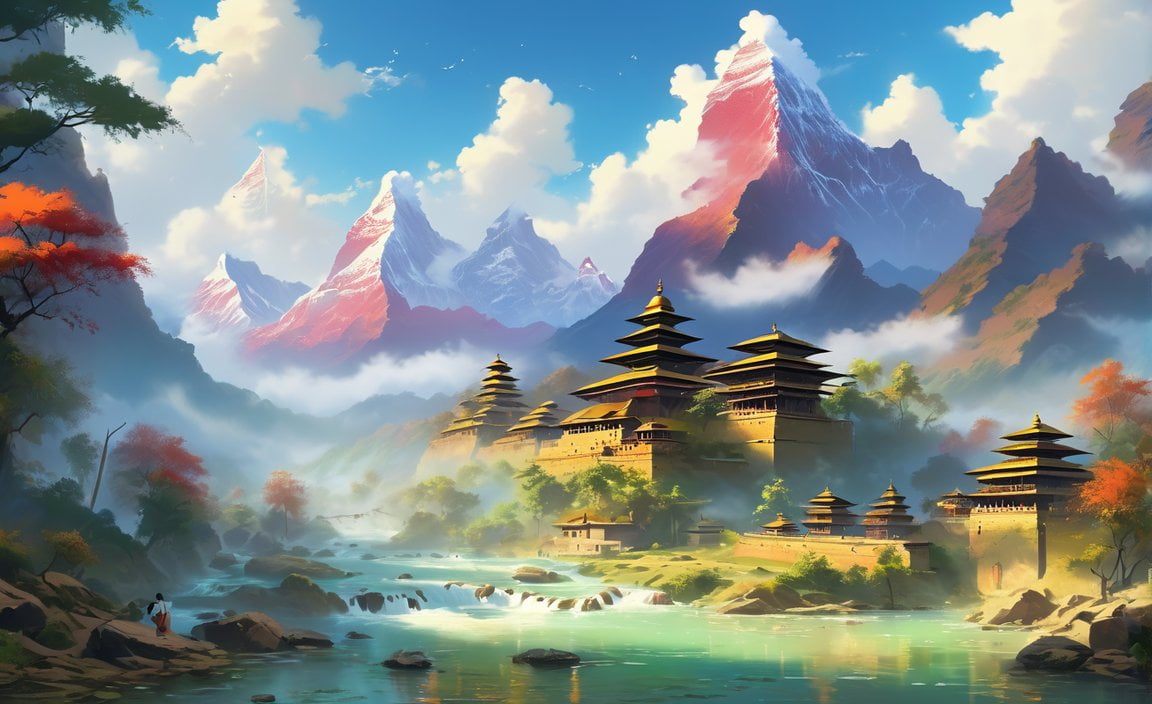
- Rivers in Nepal are vital for supporting the livelihoods of local communities, providing irrigation for agriculture, and maintaining the ecological balance of the region.
- Each river in Nepal has its own distinctive features and ecological diversity, making them significant ecosystems in their own right.
- The Ghaghara River (Karnali) is a perennial river that sustains rich biodiversity and supports agriculture and irrigation projects.
- The Kosi River, spanning three countries, plays a crucial role in irrigation, transportation, and power generation, although it is prone to flooding.
- The Bheri River, a tributary of the Ghaghara River, is essential for the socio-economic development of the region through irrigation and hydroelectricity generation.
- The Kamala River serves as a vital water resource for local inhabitants and supports agricultural practices in the region.
- Environmental threats such as pollution and degradation pose challenges to the long-term preservation and sustainable use of Nepal’s rivers.
Now, let’s explore the ecological diversity of each of these remarkable rivers in more detail:
1. Ghaghara River (Karnali)
The Ghaghara River, also known as the Karnali, is a lifeline for the communities residing along its banks. Its journey begins in the Tibetan Plateau, traversing the Himalayas in Nepal before flowing into India’s River Ganges. This perennial river sustains a rich biodiversity, supporting various species of wildlife and providing ample opportunities for birdwatching enthusiasts. Its serene waters contribute to the nourishment of lush agricultural fields, while adventurous souls can partake in thrilling water sports such as kayaking and rafting.
2. Kosi River
Originating from the Himalayas and the southern slopes of Nepal, the Kosi River is a lifeline for the eastern parts of the country. Known as the River of Sorrow due to its frequent flooding, the Kosi River plays a vital role in irrigation, transportation, and power generation. Its ecosystem offers a diverse range of flora and fauna, with an abundance of migratory birds making it a bird lover’s paradise. Exploring the Kosi River provides a unique opportunity to witness the interplay between nature’s raw power and the resilience of local communities.
3. Bheri River
The Bheri River, originating from the Dolpo region, is a major tributary of the Ghaghara River. Flowing solely within the borders of Nepal, the Bheri River spans a distance of 164 miles and supports a wide range of communities and ecosystems along its course. Its crystal-clear waters not only serve as a source of sustenance for numerous fish species but also provide an ideal habitat for aquatic reptiles and amphibians. The scenic beauty of the Bheri River makes it a favorite destination for nature enthusiasts and photographers.
4. Kamala River
Flowing through both Nepal and India, the Kamala River originates from the Churia Range and plays a crucial role in the daily lives of local inhabitants. Spanning a distance of 204 miles, the Kamala River supports irrigation schemes initiated by the surrounding communities, ensuring lush agricultural fields and sustainable livelihoods. Its rich biodiversity is home to a variety of fish species and aquatic plants, exemplifying the delicate balance of nature’s interconnectedness.
Environmental Challenges and Conservation Efforts
While these rivers offer a wealth of ecological diversity, they also face environmental threats such as pollution and degradation due to human activities and industrialization. It is crucial to implement sustainable practices and raise awareness to safeguard these invaluable ecosystems for future generations. Organizations and individuals are actively working towards monitoring and improving the water quality of Nepal’s rivers, ensuring the long-term preservation of these precious resources.
In conclusion, each of Nepal’s 10 major rivers holds a treasure trove of ecological diversity, showcasing the intricate web of life that relies on their pristine waters. Exploring the ecological wonders of these rivers not only provides a sensory feast for the adventure-seekers but also serves as a reminder of the essential role we play in their conservation. Let us embark on a journey to unveil the ecological diversity of Nepal’s rivers and inspire a deep appreciation for their remarkable beauty.
Sources:
– WorldAtlas: Major Rivers of Nepal
– Wikipedia: List of rivers of Nepal
Highlighting the Cultural Heritage Along These Rivers
The rivers of Nepal not only shape the country’s geography and provide valuable resources, but they also hold deep cultural and religious significance for the Nepalese people. These rivers have played a vital role in the early civilizations of Nepal and continue to support millions of livelihoods through irrigation and domestic use. Let’s dive into the cultural heritage along these majestic rivers and explore their significance.
1. Bagmati River: A Cultural Heritage Site
One of the rivers that stands out in terms of cultural heritage is the Bagmati River. Flowing from Thapathali to Teku Dobhan, this historic river is a 19th-century cultural heritage site. Despite its importance, it has not received the conservation efforts it deserves. The Bagmati River holds immense cultural and religious significance for the Nepalese people. It is renowned for its cleansing properties, believed to wash away sins and grant spiritual salvation. By highlighting the Bagmati River and its cultural heritage, we can raise awareness and inspire efforts towards its preservation.
2. Karnali River: A Majestic River
Considered the main river of Nepal, the Karnali River offers mesmerizing views of the majestic mountains. It is also a significant source of cheap hydroelectricity for the western regions of Nepal. The Karnali River showcases the raw power of nature and serves as a habitat for various wildlife species, contributing to its ecological importance. This river holds immense cultural significance and recognizing its heritage can help preserve and promote its natural beauty.
3. Bheri River: Adventure and Scenic Beauty
The Bheri River, a tributary of the Karnali, originates from the Dolpo region and is renowned for its scenic beauty. The river attracts adventure enthusiasts from around the world, offering thrilling white water rafting and other adventure activities. By exploring the cultural heritage along the Bheri River, we can highlight its significance and promote sustainable tourism while preserving its natural splendor.
4. The UNESCO “Rivers and Heritage” Program
In an effort to promote and raise awareness about the sociocultural issues connected to water management, UNESCO has initiated the “Rivers and Heritage” program. This program aims to preserve and celebrate the cultural heritage along rivers worldwide, including those in Nepal. By endorsing and supporting such initiatives, we can ensure the protection and conservation of Nepal’s rivers and their cultural significance.
5. The Rivers and Heritage Draw Tourists
The rivers and heritage of Nepal have the power to enchant and attract tourists seeking breathtaking views and thrilling water sports experiences. These cultural and natural treasures provide visitors with unforgettable memories and unique experiences. By highlighting the cultural heritage along Nepal’s rivers, we can encourage more people to explore and appreciate the rich history and beauty of these waterways.
Key Takeaways:
- The Bagmati River holds immense cultural and religious significance, known for cleansing sins and granting spiritual salvation.
- The Karnali River offers mesmerizing views of the mountains and is a significant source of cheap hydroelectricity.
- The Bheri River is celebrated for its scenic beauty and adventure activities like white water rafting.
- UNESCO’s “Rivers and Heritage” program promotes sociocultural issues connected to water management.
- The rivers and heritage of Nepal attract tourists who seek breathtaking views and thrilling water sports experiences.
Sources:
- WorldAtlas: Major Rivers of Nepal
- UNESCO: “Rivers and Heritage” Program
With their rich cultural heritage and breathtaking natural beauty, Nepal’s rivers are truly a treasure to behold. By highlighting their significance, we can raise awareness and contribute to the preservation and sustainable use of these majestic waterways. So, embark on your own unforgettable journey and discover the cultural heritage along Nepal’s rivers.
Adventure Sports and Recreational Activities on Nepal’s Rivers
Nepal is not only known for its majestic mountains but also for its thrilling adventure sports and recreational activities on its rivers. The diverse landscapes of Nepal offer a plethora of opportunities for adrenaline junkies and nature enthusiasts alike. From white-water rafting to paragliding, Nepal has something for everyone seeking an adventurous experience. So, let’s dive into the exciting world of adventure sports and recreational activities on Nepal’s rivers.
White-Water River Rafting on Sun Kosi
If you’re seeking an adrenaline rush, white-water river rafting on the Sun Kosi River is a must-try adventure sport. This fast-moving river provides an exhilarating experience as you navigate through wild white waters. Feel the thrill as you conquer challenging rapids and witness the stunning landscapes that surround you. Safety measures, including following instructions from trained guides and wearing appropriate safety gear, are of utmost importance to ensure your well-being during this adventure.
Rock Climbing in Hattiban
For those who love a physical challenge, rock climbing in Hattiban is the perfect choice. Test your climbing skills and adrenaline as you conquer the challenging rock faces of Hattiban. Feel a sense of accomplishment as you reach new heights and enjoy breathtaking views from the top. It is essential to follow safety protocols and use proper climbing gear to ensure a safe and enjoyable experience.
Jungle Safari at Chitwan National Park
Immerse yourself in the rich biodiversity of Nepal’s jungles through a jungle safari at Chitwan National Park. Explore the wonders of this UNESCO World Heritage Site and encounter diverse wildlife, including rhinoceroses, Bengal tigers, and various bird species. Engage in activities like elephant safaris, nature walks, and bird watching to fully embrace the natural beauty and wildlife of Nepal.
Bungee Jumping from Bhote Kosi River Bridge
If you’re ready to take a leap of faith, bungee jumping from the Bhote Kosi River bridge is the ultimate thrilling adventure. Located near the Tibetan border, this heart-pounding experience will leave you with an unforgettable memory. Plunge into the depths and feel the rush as you rebound back up, surrounded by the breathtaking landscapes of Nepal.
Paragliding in Pokhara
For a truly magical experience, go paragliding in Pokhara. Soar through the skies above this picturesque city and get a bird’s-eye view of the Himalayas. Enjoy the tranquility and breathtaking beauty of the landscape as you glide through the air. Professional paragliding operators ensure your safety and provide an exhilarating and memorable adventure.
Mountain Biking in Mustang
Experience the thrill of mountain biking in Mustang, an adventure that will take you through the scenic landscapes of this captivating region. Pedal through ancient villages, monasteries, and arid landscapes, all while surrounded by the majestic Himalayas. Get a taste of both adventure and cultural exploration in this unique experience.
Everest Skydiving above Gorak Shep
Embark on a once-in-a-lifetime adventure with skydiving above Gorak Shep, near Mount Everest. Get ready to take the leap and experience the thrill of free-falling above one of the world’s highest peaks. Feel the rush of adrenaline as you glide through the sky and witness the awe-inspiring beauty of the Everest region from a unique perspective.
Ziplining in Sarangkot
Fly through the air and revel in the thrill of ziplining in Sarangkot. This exciting adventure activity offers a bird’s-eye view of the stunning landscapes below. Glide through the treetops and enjoy the rush of adrenaline as you zip across the scenic valleys. Safety precautions and guidance from trained instructors ensure a safe and memorable ziplining experience.
These adventure sports and recreational activities on Nepal’s rivers offer a unique and exhilarating experience for all adventure enthusiasts. However, it is important to prioritize safety by following instructions from trained guides and wearing appropriate safety gear.
Key Takeaways:
- Nepal’s rivers provide a wide range of adventure sports and recreational activities for adrenaline junkies and nature enthusiasts.
- From white-water river rafting on the Sun Kosi to paragliding in Pokhara, Nepal offers thrilling adventures for everyone.
- Safety measures and wearing appropriate safety gear are essential for enjoying these activities.
- Popular adventure sports destinations in Nepal include Sun Kosi for white-water rafting, Hattiban for rock climbing, Chitwan National Park for a jungle safari, and Bhote Kosi bridge for bungee jumping.
- Pokhara is an ideal location for paragliding, while Mustang offers thrilling mountain biking adventures.
- Everest skydiving above Gorak Shep and ziplining in Sarangkot provide unique experiences for adrenaline seekers.
Sources:
– TravelTriangle: Adventure Places in Nepal To Revive Your Spirit
– Himalayas on Foot: Adventure Sports in Nepal | 9 Thrilling Adventure Sports
FAQ
Q1: What is the longest river in Nepal?
A1: The Karnali River is the longest river in Nepal, flowing from the Tibetan Plateau and cutting across the Himalayas.
Q2: How long is the Koshi River in Nepal?
A2: The Koshi River is the second longest river in Nepal, with a length of 729 km. It is also known as the Sapta Koshi and is a tributary of seven other rivers.
Q3: Which river is the deepest in Nepal?
A3: The Gandaki River is the deepest river in Nepal, stretching for miles and also shared by India and China.
Q4: Where is the West Rapti River located in Nepal?
A4: The West Rapti River lies in the Rapti Zone in the Mid-Western Region of Nepal, offering breathtaking views.
Q5: Which river flows through the Terai region of Nepal and has rich biodiversity?
A5: The Kamala River flows through the Terai region of Nepal and is known for its rich biodiversity, being home to various species of wildlife.
- China II Review: Delicious Food & Speedy Service - April 17, 2025
- Understand Virginia’s Flag: History & Debate - April 17, 2025
- Explore Long Island’s Map: Unique Regions & Insights - April 17, 2025
